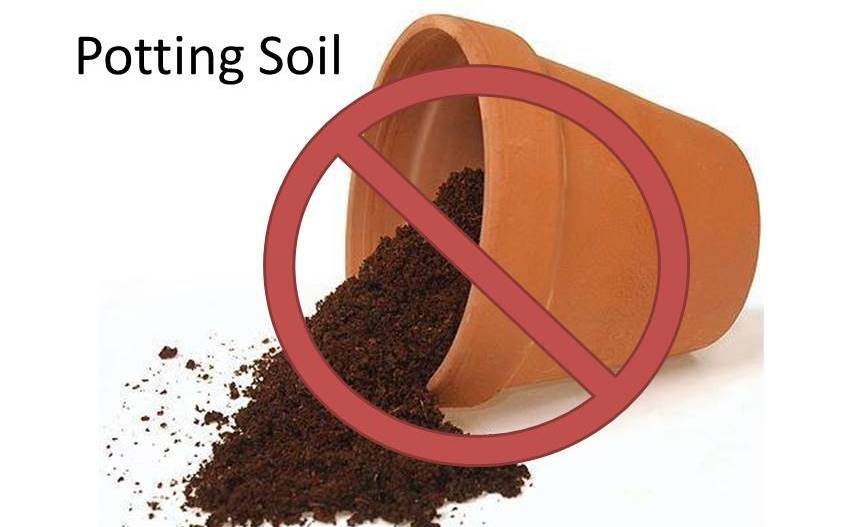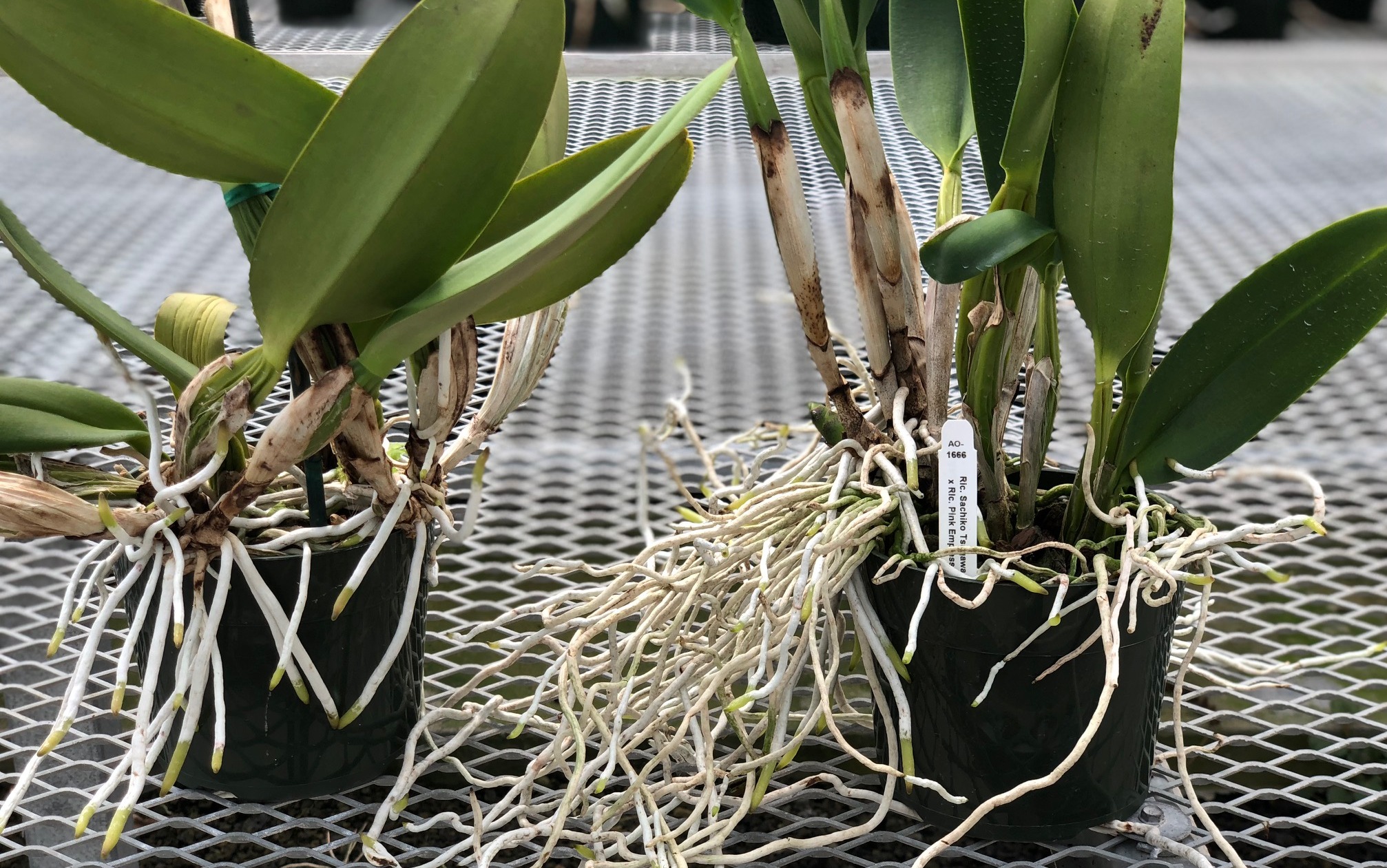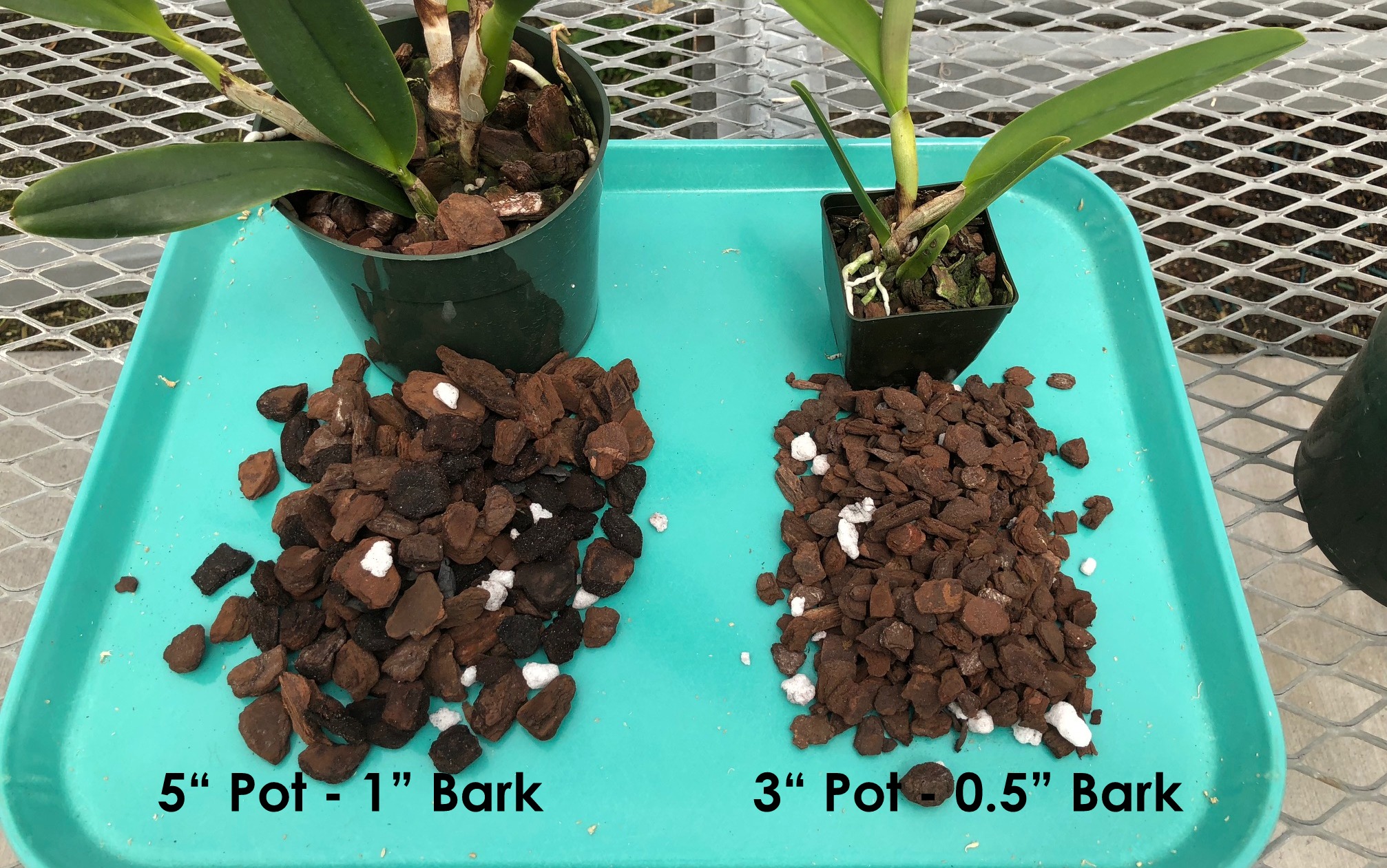
Orchid Media -- What Should I Use to Plant My Orchid?
Posted by Corinne Akatsuka on Mar 28th 2018
One of the most common questions, we receive when visitors come into our gardens is, "What media or potting material do I use for my orchid?"
Every orchid grower, whether a professional grower or hobbiest has his/her own blend that works for them. Mostly though, this blend that they use is based on the variety or orchid & it's preference for a dry or semi-moist environment.
The main thing to remember is that a vast majority of orchids are air plants. This means that their roots don't like to be smothered in a compact media or soil. They need to be able to breathe or have aeration around their roots.
NEVER use regular garden potting soil to plant up your orchid!

Your orchid plant will not be happy as the roots will be sitting in a dense, extremely moist environment almost constantly, which can cause root rot. If the roots are not happy, your plant will slowly die. There are exceptions to this rule if you have a terrestrial, ground growing orchid like Spathoglottis, Calanthe, Dactylorhiza, etc. which can handle a soil based media.
In the wild, orchids naturally cling to trees, with their roots wrapped around feeding off the nutrients brought to them via the wind and rain water. As we domesticated these orchids and put them in pots, we can see that naturally their roots want to crawl out of the pot. This is a natural state for them.

So, now that we know not to use potting soil, what is the best type of media or potting material for your orchid? Let's break it down by the basic components of a media mix. Keep in mind that when creating a media mix you want to be sure the media provides some natural nutrients, aeration (breathing room for roots), and moisture control. You don't want roots sitting in soggy media.
Here are the 6 most common media components & the purpose they serve. Remember: Please be sure that whenever you are purchasing potting materials, it is clean and sterile. If the material is not clean, it can carry disease which will be transferred to your plant.

Bark - Great organic material that provides consistent nutrient release and moisture control. Our preference is orchiata bark (Pinus radiata bark) known for it's slow decomposition.
Cinder - Molten rock crushed into pieces. Sizes can vary. Retains water in the many crevices on the surface. Pot will be especially heavy upon watering. Cinder is often chosen a more affordable alternative to bark.
Perlite - This material is cinder that has been fired to 2400F. It becomes lightweight and smoother not retaining as much water. Therefore, perlite is excellent for aeration and moisture control.
Coconut Husk - Organic material that's often added to bark. Helps to retain moisture. Great for areas where it's breezy and the media tends to dry out quicker. You won't have to water as often when adding coconut husk.
Spaghnum Moss - Probably the most commonly used media. It's easy to access, it's affordable and can be used on many orchid types. It does retain quite a bit of moisture for constant easy release to the roots. However, using this media solely, there is also a tendency to overwater your plants.
Charcoal - It's more of an additive than a major component. Charcoal is a natural source of potassium so it's great for adding to media of larger, mature plants developing buds/blooms. It also aids in cleansing the media and liquids that pass around the roots.
Select a media mix that has components that will last longer so you won't have to repot often. This might mean higher initial costs. However, if your media materials breakdown quickly, you'll be repotting before you really need to and spending more in the long run.
Now, we can break it down by which components we recommend for each variety.

Cattleyas - Since this is the variety that we specialize in, the following mix has worked well for us:
Mature plants (5" pot) - Orchiata Bark (90%), Perlite (5%) and Charcoal (5%)
Young plants (3" pot) - Orchiata Bark (95%) and Perlite (5%)
Odont/Onc., Miltonias & Paphs - Spaghnum Moss. These varieties can tolerate constant moisture but it is easier to overwater using strictly moss
Dendrobiums - Bark or Blue Rock Chips. Dendrobiums like a dry environment. Their media is best dry between watering.
Phalaenopsis - Most interchangeable media. Can use bark, cinder/moss mixture, bark/moss mixture. Phals have larger roots so they are able to tolerate different media types.
Vanda - These orchid types are the most interesting. They really do best mounted to a tree or natural substrate. If they are potted, the base foundation should be heavy enough to hold roots. Often, large bark or rocks are used to pot up vandas. Their roots are always traveling and searching for nutrients.
These are just basic guidelines to follow as you create your own mix or you can review the media blends we've created & currently use on our plants. Keep in mind that media size matters as well depending on plant and pot size.

There is no perfect or exact recipe to use. But remember, whatever you do, for these non-terrestrial orchids who love to be naturally outside of a pot, media that allows aeration is key (soggy media = drowning orchid).
